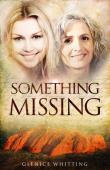AustLit
Latest Issues
AbstractHistoryArchive Description
'Diane, an uneducated young Australian mother meets by chance, Maggie, a sophisticated American poet. Their pen-friendship changes both their lives. Everything, from age, class and nationality seems to separate them but both are struggling to cope with personal issues. Maggie is trapped in a marriage involving infidelity and rape, as well as grieving for her eldest daughter Anna. Diane unconsciously yearns for the same opportunity of an education given to her brother but denied to her. This is a story of two unfulfilled women finding each other when they need it most.' (Publication summary)
Publication Details of Only Known VersionEarliest 2 Known Versions of
Works about this Work
-
Why We Need to Write the Exclusion Narratives
2019
single work
essay
— Appears in: Other Terrain , June no. 7 2019;'Every person has the right to participate equally, to be valued, to be heard; therefore, exclusion narratives need to be revealed and scrutinised. Through these stories, we learn from the past and can shape a better future. They are stories of stereotyping, discrimination and mistreatment, and they come from negative attitudes and beliefs. They tell us the accepted norms of the day and enlighten us regarding the future.' (Introduction)
-
Two Women Coping
2017
single work
essay
— Appears in: TEXT : Journal of Writing and Writing Courses , April vol. 21 no. 1 2017;'In 2015, Beth Driscoll raised the ire of three women writers by labelling them ‘middlebrow’. Her article ‘Could Not Put It Down’ for Sydney Review of Books caused Antonia Hayes, Susan Johnson and Stephanie Bishop to respond in writing and collectively (and then separately) reject the term, arguing for their right to be evaluated outside the confines of Driscoll’s parameters, defined in the following way:
We can recognise the middlebrow by a set of features. It is associated with women and the middle class. It is reverent towards legitimate culture and thus concerned with quality – the middlebrow shies away from the trashy – at the same time as it is enmeshed in commerce and explicitly mediated. The middlebrow is concerned with the domestic and recreational rather than the academic or professional, it is emotional, and it has a quality of ethical seriousness. These features can combine to make a book vibrantly social, a catalyst for passionate conversations between readers. (Driscoll 2015)
(Introduction)
-
Two Women Coping
2017
single work
essay
— Appears in: TEXT : Journal of Writing and Writing Courses , April vol. 21 no. 1 2017;'In 2015, Beth Driscoll raised the ire of three women writers by labelling them ‘middlebrow’. Her article ‘Could Not Put It Down’ for Sydney Review of Books caused Antonia Hayes, Susan Johnson and Stephanie Bishop to respond in writing and collectively (and then separately) reject the term, arguing for their right to be evaluated outside the confines of Driscoll’s parameters, defined in the following way:
We can recognise the middlebrow by a set of features. It is associated with women and the middle class. It is reverent towards legitimate culture and thus concerned with quality – the middlebrow shies away from the trashy – at the same time as it is enmeshed in commerce and explicitly mediated. The middlebrow is concerned with the domestic and recreational rather than the academic or professional, it is emotional, and it has a quality of ethical seriousness. These features can combine to make a book vibrantly social, a catalyst for passionate conversations between readers. (Driscoll 2015)
(Introduction)
-
Why We Need to Write the Exclusion Narratives
2019
single work
essay
— Appears in: Other Terrain , June no. 7 2019;'Every person has the right to participate equally, to be valued, to be heard; therefore, exclusion narratives need to be revealed and scrutinised. Through these stories, we learn from the past and can shape a better future. They are stories of stereotyping, discrimination and mistreatment, and they come from negative attitudes and beliefs. They tell us the accepted norms of the day and enlighten us regarding the future.' (Introduction)




